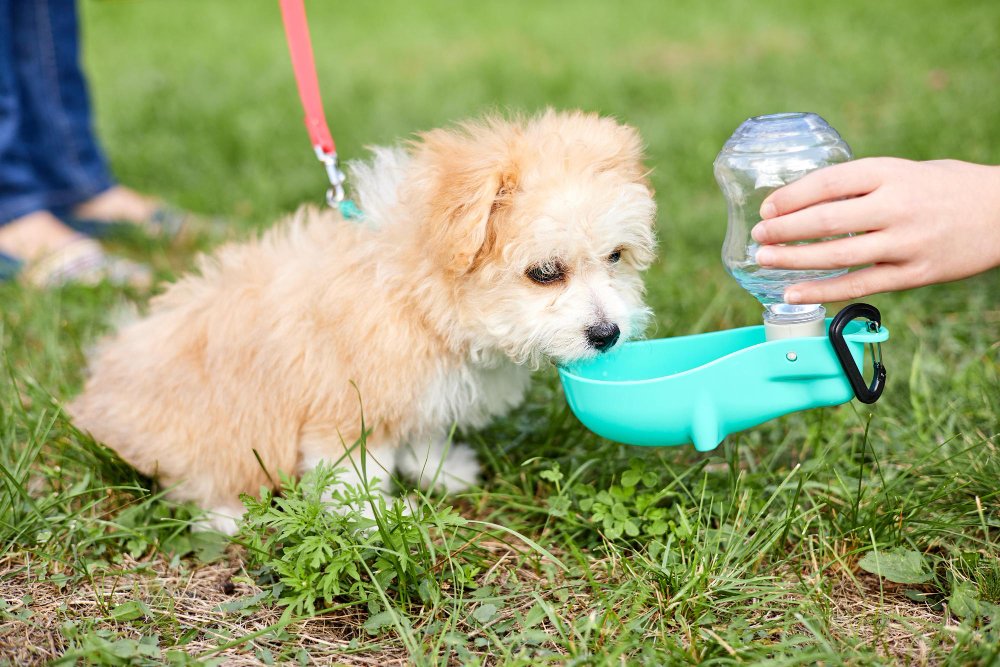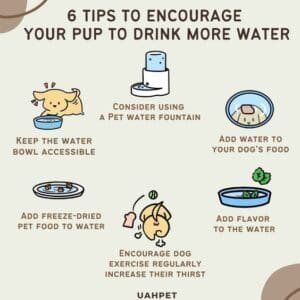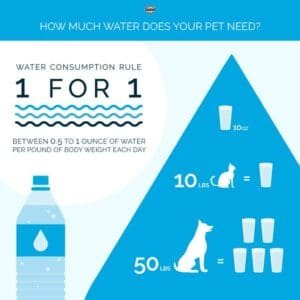Are you a proud owner of a furry friend? Ensuring that your dog has access to clean drinking water is crucial for their overall health and well-being. In this article, we will explore the importance of clean drinking water for dogs and provide you with some helpful tips to ensure they stay hydrated and happy. Let’s dive in!
Importance of Clean Drinking Water for Dogs
Hydration for overall health
Just like humans, dogs require proper hydration for their overall health and well-being. Water plays a crucial role in many bodily functions, including circulation, digestion, temperature regulation, and nutrient absorption. By providing clean drinking water, you are ensuring that your furry friend stays hydrated, which is essential for their overall health.
Prevention of dehydration
Dehydration is a serious concern for dogs and can lead to a myriad of health issues. It occurs when there is an imbalance between the amount of water taken in and the amount lost through various bodily processes. Inadequate water intake can quickly lead to dehydration, causing symptoms such as dry mouth, reduced energy, sunken eyes, and lack of skin elasticity. Clean drinking water helps prevent dehydration and keeps your dog healthy and happy.
Assisting in digestion
Water is vital for promoting proper digestion in dogs. It aids in the breakdown of food and the absorption of nutrients. Drinking an adequate amount of water ensures that your dog’s digestive system functions smoothly, reducing the risk of digestive disorders such as constipation or diarrhea. By providing clean drinking water, you are actively supporting your dog’s digestive health.
Helping maintain body temperature
Dogs regulate their body temperature primarily through panting and sweating through their paws. Adequate hydration is crucial for this process. Clean drinking water helps your dog stay cool and regulates their body temperature, especially during warm weather or physical activities. By ensuring your dog has access to clean water, you are helping them stay comfortable and prevent heatstroke.
Water Quality
Use of fresh water
Fresh, clean water is essential for your dog’s health. Make sure to provide your furry friend with fresh water each day, as they are much more likely to drink clean, refreshing water. Standing water in bowls can become stagnant and unappetizing for dogs. Therefore, it’s important to change the water regularly to maintain its freshness.
Avoidance of stagnant water
Stagnant water can harbor harmful bacteria and other contaminants, posing a risk to your dog’s health. Dogs can be sensitive to bacterial infections, especially if they have a weak immune system or are prone to allergies. Avoid leaving water sitting out for extended periods and make it a habit to clean and refill your dog’s water bowl regularly.
Filtered or purified water
In addition to providing fresh water, you may consider using filtered or purified water for your dog. Tap water can sometimes contain chemicals like chlorine or heavy metals, which could be harmful to your furry friend’s health. Filtering the water can remove these impurities, providing a safer and cleaner drinking experience for your dog.
Providing Sufficient Water
Determining water intake based on size and activity level
The amount of water your dog needs can vary depending on their size, breed, and activity level. Generally, dogs should drink about one ounce of water per pound of body weight each day. However, more active dogs or those living in hotter climates may require even more water to stay properly hydrated. It’s essential to monitor your dog’s water intake and adjust accordingly to ensure they are getting enough.
Access to water at all times
To meet your dog’s hydration needs, make sure they have access to water at all times. Whether they are inside or outside, providing a constant water source is vital. Dogs will naturally regulate their water intake based on their needs, and having water readily available allows them to drink whenever they feel thirsty, promoting optimal hydration.
Multiple water sources
For households with multiple dogs or larger living spaces, it’s beneficial to have multiple water sources available. This ensures that each dog has easy access to water and reduces the chance of one dominating the water bowl. Consider placing water bowls in different areas of your home or yard, especially if you have more than one dog.
Water during outdoor activities
When engaging in outdoor activities with your dog, such as walks, hikes, or playtime at the park, it’s essential to bring water along. Dogs can become easily dehydrated when exerting themselves, especially in hot weather. Carry a portable water container and offer your dog water breaks throughout the activity to keep them hydrated and prevent overheating.
Water in extreme weather conditions
Extreme weather conditions, whether it be scorching heat or freezing cold, can have a significant impact on your dog’s hydration. During hot weather, provide additional water and cool shaded areas for your dog to rest. In cold weather, monitor the water bowl to ensure it doesn’t freeze and offer lukewarm water if necessary. By considering your dog’s needs in extreme weather conditions, you can help them stay properly hydrated and comfortable.
Choosing the Right Water Bowl
Material and cleanliness
When selecting a water bowl for your dog, consider the material and cleanliness. Stainless steel or ceramic bowls are excellent choices as they are durable, easy to clean, and less likely to harbor bacteria compared to plastic bowls. Make sure to clean the bowl regularly using mild detergent to maintain cleanliness and provide your dog with fresh, uncontaminated water.
Size and shape
The size and shape of the water bowl are important factors to consider. Ensure that the bowl is large enough to hold an adequate amount of water for your dog, especially if they have a bigger build or tend to drink a lot. The shape of the bowl can also play a role in accessibility, particularly for dogs with short snouts. Consider a wide, shallow bowl that allows them to comfortably drink without straining.
Raised or elevated bowls
Some dogs may benefit from using raised or elevated water bowls, especially if they have neck or joint issues. These bowls can help improve posture and reduce strain on the neck and spine while drinking. Consult with your veterinarian to determine if a raised bowl is suitable for your dog’s specific needs.
Water fountain options
Water fountains designed specifically for pets can be a great option for keeping your dog’s water clean and flowing. These fountains constantly circulate and filter the water, keeping it fresh and appealing for your furry friend. The sound and movement of the water can also attract your dog and encourage them to drink more. Water fountains are especially helpful for dogs who have a habit of drinking from faucets or love to play with running water.
Cleaning Water Bowls
Daily cleaning routine
Maintaining a daily cleaning routine for your dog’s water bowl is crucial for their health. Bacteria and biofilm can quickly accumulate in water bowls, potentially causing infections or illnesses. Rinse the bowl with warm water multiple times a day to remove any leftover debris or food particles.
Use of mild detergent or vinegar
In addition to regular rinsing, it’s recommended to clean your dog’s water bowl with a mild detergent or vinegar at least once a day. These cleaning agents can help remove any stubborn stains or bacteria effectively. Make sure to thoroughly rinse the bowl after cleaning to ensure no residue is left behind.
Sanitization methods
To sanitize your dog’s water bowl, consider using a pet-safe disinfectant or simply soak the bowl in a mixture of water and bleach (one part bleach to ten parts water) for a few minutes. Rinse the bowl thoroughly afterward to remove any trace of the cleaning solution.
Prevention of biofilm formation
Biofilm, a slimy film that can develop in water bowls, is a breeding ground for bacteria. To prevent the formation of biofilm, you may consider using stainless steel or ceramic bowls instead of plastic. Additionally, regularly scrubbing the bowl with a brush or sponge can help minimize biofilm buildup and ensure your dog’s water remains clean and safe to drink.
Water Temperature
Preventing extreme cold or hot water
Just like humans, dogs have specific preferences when it comes to water temperature. Avoid providing your dog with extremely cold or hot water, as it may discourage them from drinking. Opt for lukewarm or room temperature water, especially during colder months, to make it more enticing for your dog.
Adjusting water temperature in different seasons
The water temperature requirement may vary with different seasons. During hot summer months, dogs may appreciate slightly cooler water to help cool them down. Conversely, in colder seasons, providing lukewarm water can prevent your dog from feeling discomfort due to the temperature difference. By adjusting the water temperature according to the season, you can ensure your dog remains hydrated and happy.
Traveling with Clean Water
Portable water containers
When traveling with your dog, it’s crucial to carry a portable water container. These containers are specifically designed for convenience and allow you to provide clean water for your furry companion wherever you go. Look for containers that are lightweight, leak-proof, and easy to clean.
Carrying bottled water
If you’re unsure about the water quality at your travel destination, it’s safest to carry bottled water for your dog. Drinking water from unfamiliar sources may lead to an upset stomach or waterborne illnesses. By packing enough bottled water for your trip, you can ensure your dog stays hydrated with clean water that they are accustomed to.
Avoiding unsafe water sources
When traveling or going on outdoor adventures with your dog, it’s important to be mindful of potential unsafe water sources. Lakes, rivers, or puddles may contain harmful bacteria, parasites, or toxins, which can pose a health risk for your dog if ingested. Always offer your dog clean, fresh water from known sources and discourage them from drinking from questionable water sources.
Water Supplements
Fresh fruit and vegetable additions
In addition to providing clean water, you can incorporate fresh fruits and vegetables into your dog’s diet to increase their water intake. Fruits like watermelon, apples, or berries, and vegetables like cucumbers or lettuce, are hydrating and can offer a tasty and nutritious way to keep your dog hydrated. Remember to remove any seeds, pits, or inedible parts before feeding them to your dog.
Hydrating treats
Hydrating treats are another option to supplement your dog’s water intake. These treats are designed to provide moisture while offering a tasty reward. Look for treats that contain natural, hydrating ingredients such as coconut water or bone broth. However, it’s important to remember that treats should not replace the regular intake of water.
Electrolyte supplements
Electrolyte supplements can be beneficial for dogs who engage in intense physical activities or experience dehydration due to illness. These supplements help replenish essential electrolytes, such as sodium and potassium, which are lost through sweating or excessive panting. Consult with your veterinarian before introducing any electrolyte supplements to ensure they are suitable for your dog’s specific needs.
Monitoring and Encouraging Water Consumption
Observe drinking habits
As a responsible dog owner, it’s crucial to observe your dog’s drinking habits. Take note of how much water they consume throughout the day and any changes in their drinking pattern. Increased or decreased water intake may indicate potential health concerns and should be discussed with your veterinarian.
Encourage drinking through training
Some dogs may need encouragement to drink water, especially if they have a lower water intake. You can train your dog to associate positive experiences with drinking water by offering praise or a small treat after they drink. Be patient and consistent with your training, and soon your dog will develop a healthy hydration routine.
Preventing excessive water consumption
While it’s important to provide access to water at all times, it’s equally important to prevent excessive water consumption in certain situations. For example, if your dog gulps down large amounts of water after exercise or when overheated, it can lead to discomfort or even dangerous bloating. Monitor your dog’s water intake, especially during intense physical activities, and offer smaller amounts of water more frequently to prevent excessive drinking.
Signs of Dehydration or Water-Related Issues
Understanding dehydration symptoms
Knowing the signs of dehydration can help you identify if your dog is experiencing water-related issues. Common symptoms of dehydration include lethargy, loss of appetite, dry gums, sunken eyes, and reduced urination. If you suspect your dog is dehydrated, offer them clean, fresh water immediately, and contact your veterinarian if the symptoms persist.
Other water-related health concerns
In addition to dehydration, other water-related health concerns may arise in dogs. For example, bacterial or fungal infections can occur if water bowls are not cleaned properly. Water toxicity can also be a concern if your dog ingests large amounts of water rapidly. Stay vigilant and consult with your veterinarian if you notice any unusual symptoms or behaviors related to water consumption.
Consulting a veterinarian
If you have any concerns about your dog’s water intake, hydration, or any water-related health issues, it’s important to consult with a veterinarian. They can provide tailored advice based on your dog’s individual needs and guide you on the best practices for ensuring clean drinking water and optimal hydration for your furry companion.
In conclusion, providing clean drinking water for your dog is of utmost importance for their overall health and well-being. Hydration plays a vital role in various bodily functions, and ensuring your dog has access to fresh, uncontaminated water is essential. By following the tips and guidelines outlined in this article, you can help keep your furry friend properly hydrated, promote digestion, maintain body temperature, and prevent dehydration or water-related health issues. Remember to monitor your dog’s water consumption, offer clean water at all times, choose the right water bowl, and maintain cleanliness to ensure your dog enjoys a healthy and happy life.



